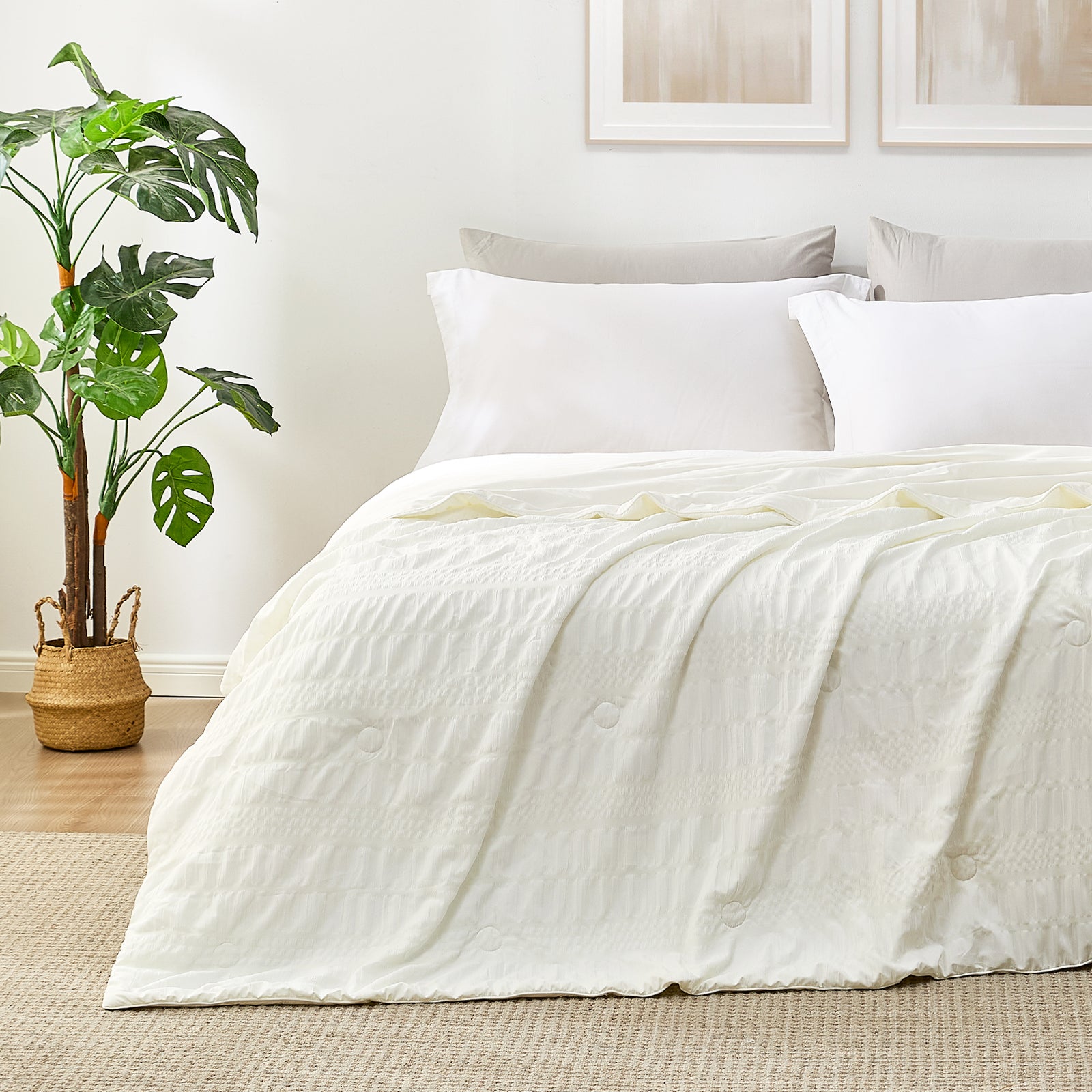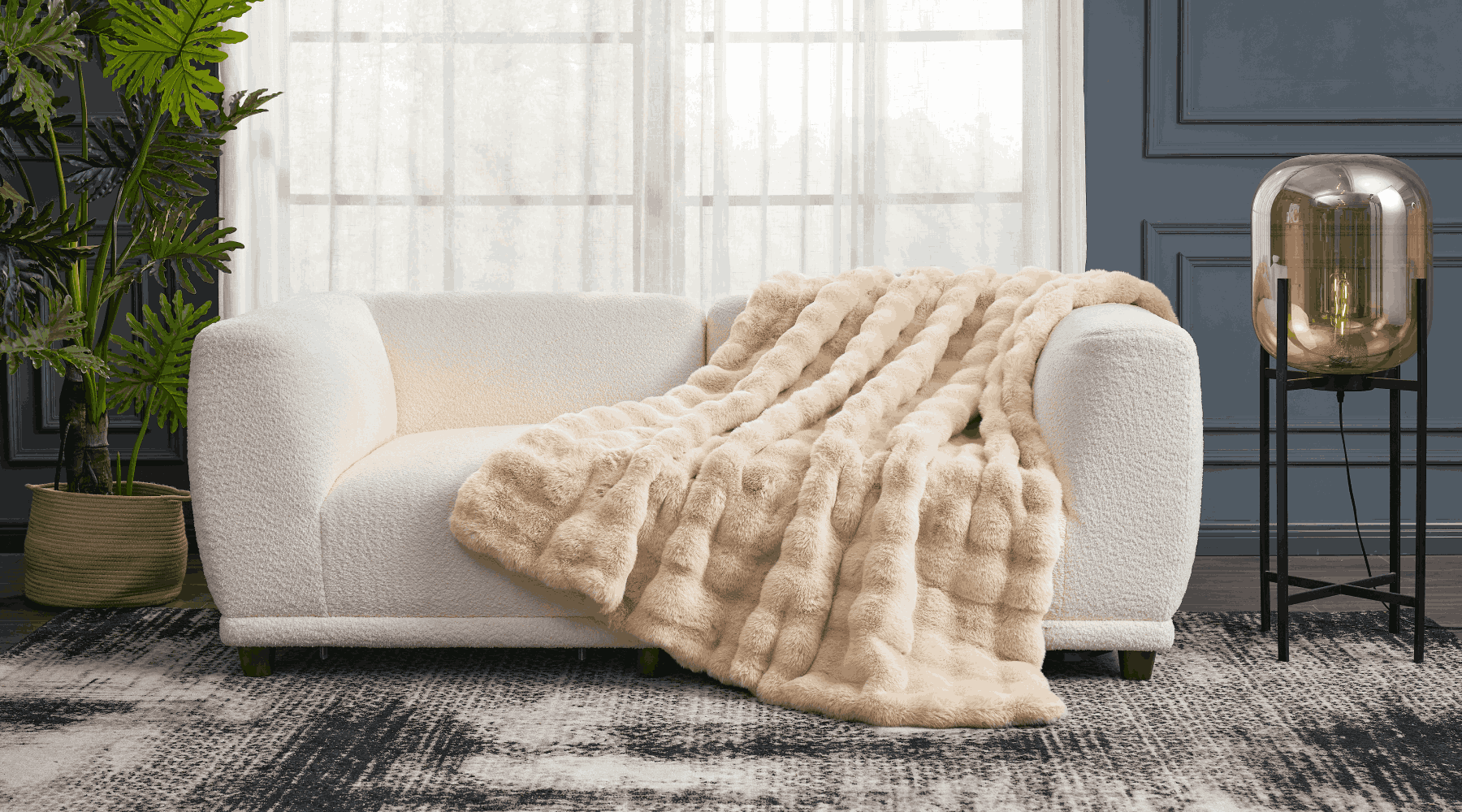It can be annoying to wake up hot in the middle of the night. Many people have trouble sleeping because they get too hot, which makes them uncomfortable and lowers the quality of their sleep. Cooling blankets are a useful way to deal with this common issue. The special materials and well-thought-out design of these blankets help keep your body temperature stable while you sleep. A nice, cool blanket can make the difference between a sleepless night and a restful one.
Why Your Body Gets Hot and How Blankets Help
It's helpful to know how heat moves and how our bodies naturally cool down before we get into the specifics of cooling blankets.
It is always true that heat goes from warmer places to cooler ones. There are four main ways that your body's heat can move to other things around you:
- Conduction: Heat transfers through direct contact, like when your warm skin touches a cool sheet
- Convection: Heat moves away through air circulation around your body
- Radiation: Your body gives off heat without physical contact
- Evaporation: Heat escapes when sweat turns from liquid to vapor on your skin
Your body also has its own ways of keeping cool. It stays at a fixed temperature by letting heat out through sweating (which cools as it evaporates) and by making blood vessels near the skin wider.
These processes work with cooling blankets, not against them. Because they're made to help heat move away from your body better while you sleep, you'll be comfortable all night.
What's Inside Cooling Blankets: Materials That Matter
Some types of materials in cooling blankets help pull heat away from your body while you sleep. If you know about these materials, you can pick the best blanket for your wants.
Breathable Fabrics: Letting Air Flow
The fabrics used in cooling blankets can make a big difference in how comfortable you feel, especially for hot sleepers prone to night sweats:
- Cotton feels familiar and soft but has limits. It lets air through easily but holds onto moisture, which can leave you feeling damp if you sweat.
- Bamboo works better than cotton for most hot sleepers. It breathes well and pulls moisture away from your skin efficiently. It also feels naturally cool to the touch.
- Linen is excellent for hot weather. It creates a loose weave that maximizes airflow and dries quickly after absorbing moisture. It wrinkles easily and feels rougher than other fabrics.
- Microfiber blends (polyester and nylon) are engineered specifically for cooling. These synthetic fabrics dry very quickly and feel smooth against your skin.
Moisture-Wicking Technology: Staying Dry
Good cooling blankets don't just let air pass through; they also keep sweat from building up-a crucial feature for hot sleepers plagued by night sweats:
Fabrics that wick away moisture from your skin move the sweat to the fabric's surface, where it can release more quickly. Even on hot nights, this keeps the layer next to your skin dry and comfy.
The best blankets that wick away wetness dry quickly, so you don't feel sticky, and they help your body's natural cooling system work better.
Phase Change Materials: Smart Temperature Control
Phase change materials (PCMs) are special substances that actively control temperature and are found in more modern cooling blankets.
When you get too hot, PCMs take in extra heat and turn from solid to liquid. After that, if you get too cold, they let out the heat they held and harden again. Keeping the temperature in this range helps keep it comfortable all night.
Usually, these are tiny capsules of wax or polymer that are woven into the fabric. They're made to change phase at about 88°F (31°C), which is a little below body temperature. This makes them great for removing extra heat without making you too cold.
Cool-to-the-Touch Yarns: Instant Relief
Some cooling blankets make you feel cold as soon as you touch them:
- Minerals like jade, mica, or clay are mixed into the yarns used to make these blankets. These minerals are much better at transferring heat than regular cloth. When you touch them for the first time, they quickly take heat away from your skin.
- The newer Q-Max > 0.4 cooling fabric from Cozy Bliss works similarly, absorbing body heat while accelerating moisture evaporation-ideal for both cool spring nights and warmer evenings. Unlike cotton or linen, Cozy Bliss cooling fabric provides an immediate cooling sensation on contact.
How Cooling Blankets Are Built: Design Features That Work
Beyond the materials themselves, how a cooling blanket is constructed plays a crucial role in how well it works. Smart design choices can significantly improve a blanket's cooling performance.
Loose Weaves and Channel Stitching for Better Airflow
The way fabrics are woven or knitted affects how much air can move through them:
- Loose weaves and open knits create small spaces between threads that allow air to circulate freely. This increased ventilation helps carry heat away from your body more efficiently. Many cooling blankets use a looser knit than standard blankets specifically for this purpose. You can often see this by holding the blanket up to a light source - more light passing through means better airflow potential.
- Channel stitching creates deliberate pathways in the blanket where air can flow. Rather than stitching a blanket with solid seams throughout, channel stitching creates long, uninterrupted passages. These channels work like tiny ventilation corridors, allowing warm air to escape and cool air to enter. This design is particularly effective for blankets used in warmer environments.
Three-Layer Structure: Wicking, Cooling, and Breathing
One effective cooling blanket uses multiple layers, each with a specific purpose:
- The top layer (touching your skin) typically uses moisture-wicking fabrics to pull sweat away from your body. This layer needs to be soft and comfortable while efficiently managing moisture.
- The middle layer often contains the active cooling elements, such as phase change materials or cool-to-the-touch yarns. This layer does the heavy lifting of temperature regulation by absorbing excess heat or creating a cooling sensation.
- The bottom layer focuses on breathability to allow air to enter and exit the blanket system. This layer completes the cooling circuit by enabling continuous airflow through the entire blanket.
This multi-layer approach creates a comprehensive cooling system that manages both moisture and temperature. The layers work together, with each addressing a different aspect of keeping you cool.
Lightweight Design and Body-Conforming Fit
The way a cooling blanket looks and feels also affects how well it works:
For cooling blankets to work, they need to be made of light materials. Because they make a better barrier between you and the air around you, heavier blankets keep in more heat. Most cooling blankets are lighter than regular blankets, which lets heat leave more easily while still giving you enough warmth to be comfortable.
It's also important how the blanket fits around your body. If you want a good cooling blanket, it should fit your body shape without being too tight. This gentle touch makes sure that heat moves quickly to the cooling materials and stops the feeling of being trapped in heat that comes from coverings that are too tight. In its best form, balance feels like a soft, natural hug, not like a tight blanket or a wrap that sticks to you.

Key Benefits of Cooling Blankets
Now that we've talked about how cooling blankets work, from the science behind heat transfer to the careful designs and materials used, let's talk about why you might want to use one for your sleep.
Fall Asleep Faster and Stay Asleep Longer
While you sleep, your body cools down on its own. Cooling blankets help keep you at a comfortable temperature all night, which can help you fall asleep faster and sleep better. The things we talked about earlier work together to keep your body temperature stable while you sleep.
Wake Up Dry Instead of Sweaty
In cooling blankets, the fabrics that wick away moisture pull sweat from your skin so it can dry. This helps keep you dry all night, so you don't wake up feeling wet and uncomfortable like you do when you use regular blankets.
Lower Your Air Conditioning Bills
A cooling blanket only cools you, not the whole room. This method can help save energy, especially in the summer. A lot of people find that when they use a cooling blanket, they can raise the temperature a few degrees, which lowers their cooling costs.
Reduce Hot Flashes and Heat-Related Discomfort
People who have hot flashes because of menopause, side effects of medications, or other conditions that make it hard to control their temperature may find cooling blankets especially helpful. The cooling beddings we've talked about can help these people sleep much better at night.
Feel the Cooling Difference!
A common sleep problem can be solved with cooling blankets, which are a mix of science and smart design. Through fabrics that let air pass through, moisture-wicking technology, and temperature-regulating materials, they work with your body's natural cooling systems. These blankets can help you stay warm and cozy all night, even if you have hot flashes, night sweats, or just plain hot weather. Getting a cool blanket can help you fall asleep faster, stay asleep longer, and feel refreshed when you wake up instead of hot. It's important to sleep in a cozy place, and cooling blankets can help.
Read More
- How to Choose the Best Cooling Bedding?
- 10 Cozy Living Room & Bed Room Ideas For Ultimate Comfort & Relaxation
- YOUR BEST CHOICE FOR GIFT GIVING AT ANY MOMENT






Leave a comment
This site is protected by hCaptcha and the hCaptcha Privacy Policy and Terms of Service apply.